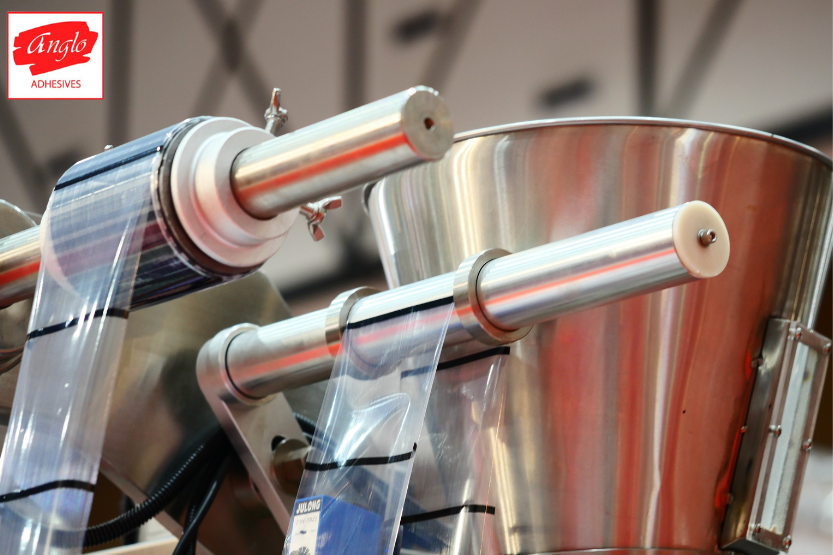Blog
How Contract Fillers Maintain Strict Standards with Flexible Packaging

The rise of consumer demand for convenience have propelled flexible packaging to the forefront of the industry. A broad category of container materials that can be bent, folded, or compressed without losing their functionality. Moreover, these materials are typically lightweight and come in various forms. Additionally, its lightweight design, space-saving efficiency, and eye-catching printability make it a popular choice for a wide range of products. However, this shift presents a challenge for contract fillers: ensuring the highest quality standards are maintained while utilising flexible packaging.
Understanding Flexible Packaging’s Advantages and Challenges
Flexible packaging encompasses a diverse range of materials, including pouches, stand-up bags, and films. Further, these materials offer several advantages over traditional rigid containers:
- Reduced weight and bulk: This translates to lower transportation costs and hence, improved environmental impact.
- Enhanced shelf appeal: It allows for high-quality printing and graphics, therefore, creating a visually appealing product presentation.
- Increased efficiency: Flexible packaging often requires less storage space for both filled and empty containers.
However, the very flexibility that offers these advantages can also introduce challenges for contract fillers:
- Puncture resistance: It can be susceptible to punctures or tears if not handled properly.
- Moisture barrier properties: Certain products require high moisture barrier properties to maintain freshness and therefore, prevent spoilage. Thus, choosing the right material is crucial.
- Temperature sensitivity: Some flexible materials may not be suitable for products requiring extreme temperature control.
The Guardians of Quality in Flexible Packaging
Contract fillers play a critical role in ensuring the integrity. Moreover, the safety of products packaged with flexible materials. Furthermore, they achieve this by implementing a series of stringent quality control measures throughout the filling process.
The Foundation for Success
The first step involves meticulous material selection. In addition, contract fillers work closely with packaging suppliers to identify the most suitable flexible material for each product. Factors considered include:
- Product compatibility: The material needs to be compatible with the product’s chemical composition. As a result, prevent degradation or interaction.
- Barrier properties: The material must offer the necessary barrier protection against moisture, oxygen, or light as required by the product.
- Puncture resistance: The material’s strength and puncture resistance need to be appropriate for the product’s weight, handling requirements, and potential for damage during transport.
Rigorous Quality Control Procedures
Once the material is selected, contract fillers implement a series of quality control procedures throughout the filling process:
- Incoming material inspection: Inspectors thoroughly inspect each batch of flexible packaging material to ensure it meets the agreed-upon specifications for thickness, strength, and seal integrity.
- Filling line monitoring: The filling equipment is constantly monitored. Therefore, ensure accurate fill weights and proper seal formation.
- Leak detection: We employ advanced leak detection systems to identify any punctures or imperfections in the seals.
- Finished product inspection: Random samples of filled packages are inspected visually and may undergo additional testing for seal strength and leak detection.
Maintaining the Edge in Flexible Packaging
Contract fillers continuously invest in innovative technologies to further enhance quality control with flexible packaging. These technologies include:
- Vision inspection systems: Advanced cameras can detect even the smallest imperfections in the packaging material or seals.
- Metal detection systems: These systems ensure no foreign objects are present within the filled packages.
- Non-destructive testing methods: Techniques like X-rays or ultrasounds can be used to assess the integrity of seals without damaging the packaging.
A Recipe for Success in Flexible Packaging
Maintaining strict standards with flexible packaging requires effective communication and collaboration between contract fillers, brand owners, and packaging suppliers.
- Clear specifications: Brand owners need to provide clear specifications for the desired product shelf life, handling requirements, and any regulatory compliance needs.
- Collaborative material selection: Contract fillers and packaging suppliers work together to identify the optimal material solution. Consequenytly, meets the product’s specific needs and the brand owner’s quality expectations.
- Continuous improvement: Regular communication fosters a culture of continuous improvement, hence, allowing all partners to identify and implement new technologies and best practices. Therefore, further enhance quality control.
A Commitment to Excellence
The future of flexible packaging is bright. As innovations in materials, technology, and quality control procedures continue to emerge, contract fillers will be at the forefront, thus, ensuring the highest standards are maintained. Moreover, this will allow brands to leverage the numerous benefits of flexible packaging while delivering safe, high-quality products to consumers.
By partnering with a reputable contract filler like Anglo Adhesives, brands can gain a competitive advantage in the marketplace. We at Anglo Adhesives leverage our expertise, technology, and unwavering commitment to quality to ensure your products reach consumers in a safe, fresh, and visually appealing way. In addition, we can help you navigate the complexities of material selection, implement rigorous quality control measures, and thus, stay ahead of the curve with innovative technologies. Partnering with Anglo Adhesives allows you to focus on your core business activities—developing and marketing your products—while ensuring your brand maintains the highest standards with flexible packaging.